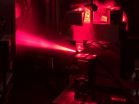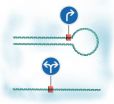(Press-News.org) A new study found that patients with gout who consumed cherries over a two-day period showed a 35% lower risk of gout attacks compared to those who did not eat the fruit. Findings from this case-crossover study published in Arthritis & Rheumatism, a journal of the American College of Rheumatology (ACR), also suggest that risk of gout flares was 75% lower when cherry intake was combined with the uric-acid reducing drug, allopurinol, than in periods without exposure to cherries or treatment.
Previous research reports that 8.3 million adults in the U.S. suffer with gout, an inflammatory arthritis triggered by a crystallization of uric acid within the joints that causes excruciating pain and swelling. While there are many treatment options available, gout patients continue to be burdened by recurrent gout attacks, prompting patients and investigators to seek other preventive options such as cherries. Prior studies suggest that cherry products have urate-lowering effects and anti-inflammatory properties, and thus may have the potential to reduce gout pain. However, no study has yet to assess whether cherry consumption could lower risk of gout attacks.
For the present study, lead author Dr. Yuqing Zhang, Professor of Medicine and Public Health at Boston University and colleagues recruited 633 gout patients who were followed online for one year. Participants were asked about the date of gout onset, symptoms, medications and risk factors, including cherry and cherry extract intake in the two days prior to the gout attack. A cherry serving was one half cup or 10 to 12 cherries.
Participants had a mean age of 54 years, with 88% being white and 78% of subjects were male. Of those subjects with some form of cherry intake, 35% ate fresh cherries, 2% ingested cherry extract, and 5% consumed both fresh cherry fruit and cherry extract. Researchers documented 1,247 gout attacks during the one-year follow-up period, with 92% occurring in the joint at the base of the big toe.
"Our findings indicate that consuming cherries or cherry extract lowers the risk of gout attack," said Dr. Zhang. "The gout flare risk continued to decrease with increasing cherry consumption, up to three servings over two days." The authors found that further cherry intake did not provide any additional benefit. However, the protective effect of cherry intake persisted after taking into account patients' sex, body mass (obesity), purine intake, along with use of alcohol, diuretics and anti-gout medications.
In their editorial, also published in Arthritis & Rheumatism, Dr. Allan Gelber from Johns Hopkins University School of Medicine in Baltimore, Md. and Dr. Daniel Solomon from Brigham and Women's Hospital and Harvard University Medical School in Boston, Mass. highlight the importance of the study by Zhang et al. as it focuses on dietary intake and risk of recurrent gout attacks. While the current findings are promising, Gelber and Solomon "would not advise that patients who suffer from gout attacks abandon standard therapies." Both the editorial and study authors concur that randomized clinical trials are necessary to confirm that consumption of cherry products could prevent gout attacks
###
This research was funded by grants from the National Institute of Arthritis and Musculoskeletal and Skin Diseases (NIAMS), Arthritis Foundation and ACR Research and Education Fund.
This study and editorial are published in Arthritis & Rheumatism. Media wishing to receive a PDF of the articles may contact sciencenewsroom@wiley.com.
Full citation:"Cherry Consumption and the Risk of Recurrent Gout Attacks." Yuqing Zhang, Tuhina Neogi, Clara Chen, Christine Chaisson, David Hunter, Hyon K. Choi. Arthritis & Rheumatism; Published Online: September 28, 2012 (DOI: 10.1002/art.34677).
URL Upon publication: http://doi.wiley.com/10.1002/art.34677
Editorial: "If Life Serves Up a Bowl of Cherries, and Gout Attacks are "The Pits"… Implications for Therapy." Allan C. Gelber and Daniel H. Solomon. Arthritis & Rheumatism; Published Online: September 28, 2012 (DOI: 10.1002/art.34676).
URL Upon publication: http://doi.wiley.com/10.1002/art.34676
Author Contact: To arrange an interview with Dr. Zhang, please contact Gina DiGravio with Boston University School of Medicine at gina.digravio@bmc.org or at +1 617-638-8480.
About the Journal:
Arthritis & Rheumatism is an official journal of the American College of Rheumatology (ACR) and the Association of Rheumatology Health Professionals (ARHP), a division of the College, and covers all aspects of inflammatory disease. The American College of Rheumatology is the professional organization who share a dedication to healing, preventing disability, and curing the more than 100 types of arthritis and related disabling and sometimes fatal disorders of the joints, muscles, and bones. Members include practicing physicians, research scientists, nurses, physical and occupational therapists, psychologists, and social workers. The journal is published by Wiley on behalf of the ACR. For more information, please visit http://wileyonlinelibrary.com/journal/art.
About Wiley
Founded in 1807, John Wiley & Sons, Inc. has been a valued source of information and understanding for more than 200 years, helping people around the world meet their needs and fulfill their aspirations. Wiley and its acquired companies have published the works of more than 450 Nobel laureates in all categories: Literature, Economics, Physiology or Medicine, Physics, Chemistry, and Peace.
Our core businesses publish scientific, technical, medical, and scholarly journals, encyclopedias, books, and online products and services; professional/trade books, subscription products, training materials, and online applications and Web sites; and educational materials for undergraduate and graduate students and lifelong learners. Wiley's global headquarters are located in Hoboken, New Jersey, with operations in the U.S., Europe, Asia, Canada, and Australia. The Company's Web site can be accessed at http://www.wiley.com. The Company is listed on the New York Stock Exchange under the symbols JWa and JWb.
Eating cherries lowers risk of gout attacks by 35 percent
2012-09-28
ELSE PRESS RELEASES FROM THIS DATE:
Local funding leads to big things in parrot genomics
2012-09-28
September 28, 2012, Hong Kong, China – The international open-access journal GigaScience (a BGI and BioMed Central journal) announces the publication of a unique study providing the genome sequence of the critically endangered Puerto Rican Parrot (Amazona vittata) by Taras Oleksyk and colleagues at the University of Puerto Rico-Mayaguez. The sequencing and analysis of the genome of the only surviving native parrot in US territory provides numerous benefits for avian genetics, conservation studies, and evolutionary analyses. What is remarkable here, and highlighted in an ...
Big science: Local funding supports open-access sequencing of the Puerto Rican Parrot genome
2012-09-28
The critically endangered Puerto Rican Parrot (Amazona vittata) is the only surviving parrot species native to the United States. A genomic sequencing project, funded by community donations, has published today, in BioMed Central and BGI's open access journal GigaScience, the first sequence of A. vittata, the first of the large Neotropical Amazona birds to be studied at the genomic level.
The Puerto Rican Parrot was once abundant throughout Puerto Rico but destruction of old forest habitats to make way for farming in the 19th Century resulted in a drastic decline in their ...
Ancient stinging nettles reveal Bronze Age trade connections
2012-09-28
A piece of nettle cloth retrieved from Denmark's richest known Bronze Age burial mound Lusehøj may actually derive from Austria, new findings suggest. The cloth thus tells a surprising story about long-distance Bronze Age trade connections around 800 BC. The findings have just been published in Nature's online journal Scientific Reports.
2,800 years ago, one of Denmark's richest and most powerful men died. His body was burned. And the bereaved wrapped his bones in a cloth made from stinging nettle and put them in a stately bronze container, which also functioned as urn.
Now ...
The true costs of cancer in Europe revealed
2012-09-28
Vienna, Austria, 28 September 2012 – New studies that reveal for the first time the real economic and human costs of caring for cancer patients in Europe will be presented during the ESMO 2012 Congress of the European Society for Medical Oncology in Vienna.
"Here we have two studies of enormous importance," noted Prof Peter Boyle, President of the International Prevention Research Institute in Lyon, France, Member of the ESMO Faculty group on Cancer Prevention, who was not involved in the studies. "It is essential to have knowledge of the total costs of cancer and Dr ...
'Carmaheaven': Closure of 405 in 2011 improved air quality up to 83 percent
2012-09-28
Take the time to enjoy a deep breath next weekend when the 405 freeway closes for Carmageddon II. If it's anything like last year, the air quality is about to get amazing.
In study findings announced Sept. 28, UCLA researchers report that they measured air pollutants during last year's Carmageddon (July 15) and found that when 10 miles of the 405 closed, air quality near the shuttered portion improved within minutes, reaching levels 83 percent better than on comparable weekends.
Because traffic dipped all over Southern California that weekend, air quality also improved ...
Electrons confined inside nano-pyramids
2012-09-28
Quantum dots are nanostructures of semiconducting materials that behave a lot like single atoms and are very easy to produce. Given their special properties, researchers see huge potential for quantum dots in technological applications. Before this can happen, however, we need a better understanding of how the electrons "trapped" inside them behave. Dresden physicists have recently observed how electrons in individual quantum dots absorb energy and emit it again as light. Their results were recently published in the journal "Nano Letters".
Quantum dots look like miniscule ...
Loop the loop, DNA style
2012-09-28
In certain toy racecar tracks, sneaky players can flip a switch, trapping their opponents' vehicles in a loop of track. Cells employ a less subtle approach: they change the track's layout. In a study published online today in Science, scientists at the European Molecular Biology Laboratory (EMBL) and Oxford University discovered that, by forming or undoing gene loops, cells manipulate the path of the transcription machinery – which reads out instructions from DNA – controlling whether it moves along the genetic material in one direction or two.
"We found that gene loops ...
Nanosciences: All systems go at the biofactory
2012-09-28
In order to assemble novel biomolecular machines, individual protein molecules must be installed at their site of operation with nanometer precision. LMU researchers have now found a way to do just that. Green light on protein assembly!
The finely honed tip of the atomic force microscope (AFM) allows one to pick up single biomolecules and deposit them elsewhere with nanometer accuracy. The technique is referred to as Single-Molecule Cut & Paste (SMC&P), and was developed by the research group led by LMU physicist Professor Hermann Gaub. In its initial form, it was only ...
What makes surgeons happy?
2012-09-28
TORONTO, Sept. 28, 2012—Lack of control over operating rooms and other resources as well as a lack of work-life balance are among the main reasons general surgeons may be dissatisfied with their jobs, a new study has found.
The study was led by Dr. Najma Ahmed, a trauma surgeon at St. Michael's Hospital, at a time when both the Association of American Medical Colleges and the Canadian Medical Association have reported a decline in the number of general surgeons due to low recruitment, poor retention and early retirement.
Dr. Ahmed said that since the general surgery ...
Study ties early menopause to heart attack, stroke
2012-09-28
Women who experience early menopause are more likely to have a heart attack or stroke than women whose menopause occurs at a later age, according to a new study by Melissa Wellons, M.D., assistant professor of Medicine in the Vanderbilt Division of Diabetes, Endocrinology and Metabolism.
Wellons conducted the research while working at the University of Alabama-Birmingham and it is published in the current issue of Menopause: The Journal of The North American Menopause Society.
She said the study is especially important because cardiovascular disease is the leading cause ...



